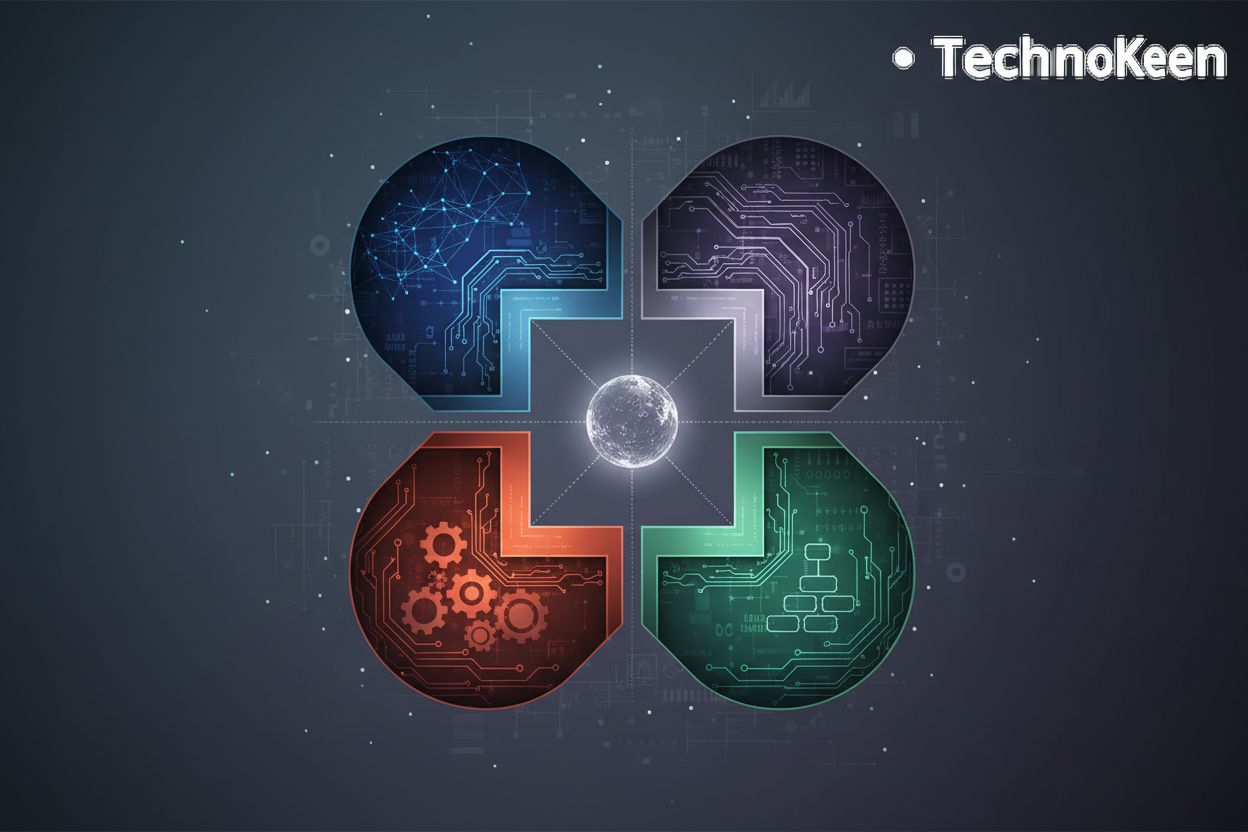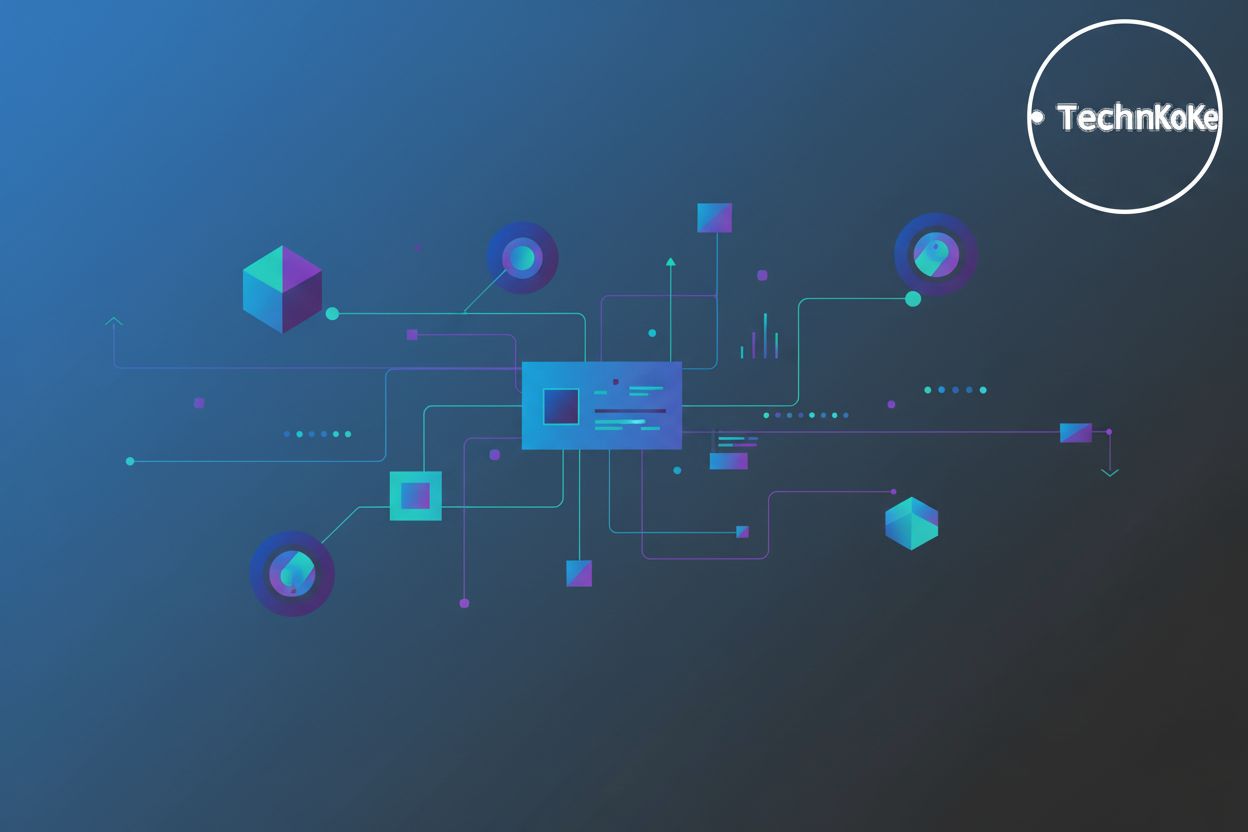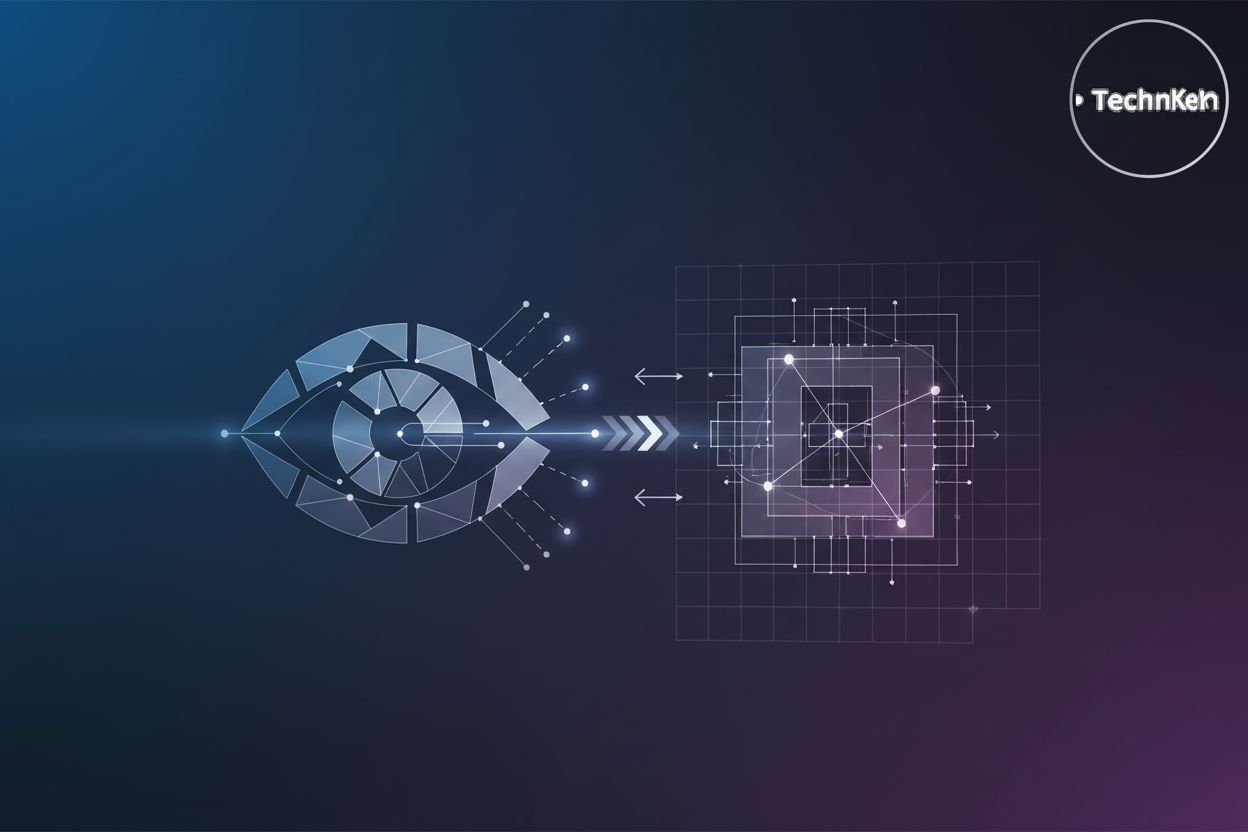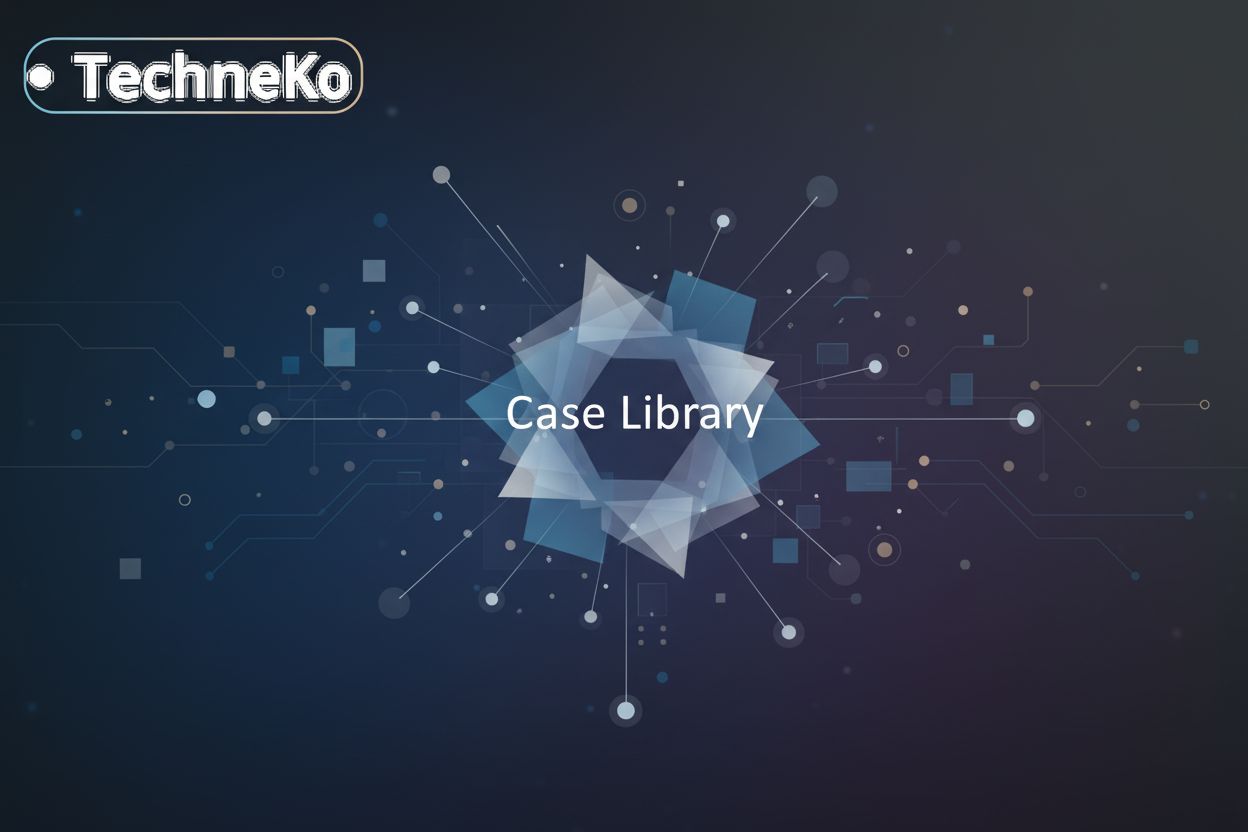Developing AI Agents for Effective Business Process Automation
TL;DR
Understanding the Potential of AI Agents in Business Automation
Okay, so, AI agents in business? It's not just sci-fi anymore, I'm telling you.
Basically, AI agents are like super-smart virtual assistants. They're not just following pre-set rules, they're actually learning and adapting to get stuff done more efficiently. Think of it like this:
- Definition: AI agents are autonomous entities that can perceive their environment, make decisions, and take actions to achieve specific goals. (What Are AI Agents? | IBM) In a business context, "perceive their environment" could mean analyzing incoming customer emails, monitoring inventory levels, or tracking website traffic. "Make decisions" involves using this perceived information to choose the best course of action, like prioritizing urgent customer requests or identifying a potential stockout. "Take actions" means executing those decisions, such as automatically responding to a customer query, placing a reorder for inventory, or adjusting ad spend. It's a bit more sophisticated than your standard if-then-else automation, y'know?
- Examples: In healthcare, they could be used to schedule appointments and manage patient records, freeing up staff for more critical tasks. Or, in retail, AI agents can analyze customer data to provide personalized recommendations, boosting sales and improving customer satisfaction.
- Differences: While these examples showcase the capabilities, it's important to understand how AI agents differ from traditional automation tools. Traditional automation tools are like robots doing the same thing over and over, following a strict, pre-programmed sequence. AI agents, on the other hand, can handle unexpected situations and make smarter choices based on context and learning. It's like, one's a record player, and the other's a DJ who can improvise and adapt to the crowd.
Implementing AI agents can seriously boost your bottom line. It's not just hype:
- Efficiency: AI agents can work 24/7 without needing breaks, which means faster turnaround times and higher output. (AI ability to work eight-hour shift without burnout or break is near)
- Cost Reduction: By automating routine tasks, you can slash labor costs and minimize errors that lead to expensive mistakes. (How Automating Administrative Tasks Can Slash Overhead Costs ...)
- Accuracy: AI agents are really good at spotting patterns and handling data, reducing the risk of human error and improving data quality.
- Decision-Making: These agents can analyze vast amounts of data to provide insights that help you make better, faster decisions.
- Customer Experience: Think personalized service, faster responses, and more relevant interactions – all leading to happier customers.
Not every process is ripe for AI agent automation, of course. It's about picking the low-hanging fruit:
- Criteria: Look for repetitive tasks, data-heavy processes, and areas where accuracy is crucial.
- Processes: Invoice processing, customer onboarding, and data entry are prime candidates. For invoice processing, the repetitive nature of extracting data from various formats and the potential for human error make it ideal. Customer onboarding involves a series of structured steps and data collection that AI can streamline. Data entry, with its manual and often tedious nature, is a prime candidate for automation to reduce errors and free up human resources. These are the kind of things that make employees want to pull their hair out.
- Feasibility: Before diving in, assess the potential impact and make sure the automation is actually doable and beneficial.
So, what's next? Well, we'll dive into identifying those juicy business processes that are just begging for some AI agent love, so stay tuned.
Planning and Designing Your AI Agent Strategy
Alright, so you're thinking about unleashing AI agents on your business processes? Smart move! But hold your horses, you can't just dive in headfirst. You gotta have a plan, a strategy, a blueprint, whatever you wanna call it.
Think of it like building a house – you wouldn't start hammering nails without a set of plans, right? Same deal here.
Here's what you need to nail down before you start coding:
- Defining Crystal-Clear Objectives and KPIs: What exactly are you trying to achieve with these AI agents? Are you aiming to slash customer service response times? Boost sales conversions? Reduce operational costs? Whatever it is, make sure it's specific, measurable, attainable, relevant, and time-bound – you know, SMART goals. And for each goal, figure out the key performance indicators (KPIs) you'll use to track progress. If you don't know where you're going, how will you know when you get there?
- Picking the Right AI Agent Platform and Framework: There's a whole ecosystem of platforms out there – Dialogflow, Rasa, Watson Assistant, you name it. Each has its strengths and weaknesses. Consider things like scalability (Does it offer auto-scaling to handle fluctuating demand?), integration capabilities (Does it have pre-built connectors for common business systems like CRMs or ERPs?), and, of course, cost (Can you afford it?). And don't forget about the underlying AI frameworks like TensorFlow or PyTorch – these are the engines that power your agents.
- Designing Killer AI Agent Workflows: This is where you map out the entire process, step by step. How will the agent interact with users? What kind of data will it need? What happens when things go wrong? Think about all the possible scenarios and design your workflow accordingly. This ain't no time to wing it!
Let's say you're in e-commerce and want to automate product recommendations. You'd start by defining your objective: increase average order value by 15% within six months. Your KPI might be "percentage increase in average order value." Then, you'd design a workflow where the AI agent analyzes customer browsing history, purchase data, and demographic information. The agent might use collaborative filtering to find similar customers and recommend products they liked, or content-based filtering to suggest items similar to those the user has viewed. If a customer adds a specific item to their cart, the agent might recommend complementary items or offer a discount on a bundle.
Planning and design? Check. Next up, it's all about the frameworks and platforms that make this AI magic happen.
Developing and Deploying AI Agents
Okay, so you've got the blueprints, now it's time to actually build something. This phase is where your AI agents start to take shape, and trust me, it can get a little messy – in a good way!
First things first, data preparation. Think of this as laying the foundation for your AI agent's brain. If you feed it garbage data, it's gonna learn garbage, plain and simple. So, you gotta:
- Gather all the relevant data: This might include customer interactions, sales records, product descriptions, you name it. The more, the merrier – within reason, of course.
- Clean it up: This is where the fun begins. Missing values? Inconsistent formats? Typos galore? Time to roll up your sleeves and get your hands dirty. This often involves writing scripts to standardize the data, remove duplicates, and fill in the gaps.
- Transform it: AI agents don't speak human; they speak machine. So, you need to convert your data into a format that they can understand. This might involve encoding categorical variables (like turning "red," "blue," "green" into numbers), scaling numerical features (like bringing values between 0 and 1), tokenizing and embedding text data (breaking sentences into words and representing them numerically), extracting features from images (identifying edges, shapes, or textures), or handling time-series data (creating lag features or rolling averages).
Now for the exciting part: model training. This is where you take your prepared data and use it to teach your AI agent how to do its job.
- Select the right model: There's a whole zoo of machine learning models out there – decision trees, neural networks, support vector machines, you name it. The best one for your needs depends on the type of problem you're trying to solve and the nature of your data.
- Train the model: This involves feeding your data to the model and letting it learn the relationships between the inputs and outputs. It's a bit like teaching a dog tricks – you show it what you want it to do, and it gradually figures it out.
- Validate the model: Once the model is trained, you need to make sure it's actually working properly. This involves testing it on a separate set of data that it hasn't seen before. If it performs well on the validation data, you're good to go. If not, you need to go back to the drawing board and tweak your model or data.
Alright, the agent's trained and ready to go, now where do you stick it? You've got options:
- Cloud: Easy scaling, less maintenance. Good for most use cases.
- On-premise: More control, better for sensitive data. If you're in finance or healthcare, you might lean this way.
- Hybrid: Best of both worlds, but more complex. It's like ordering off two menus at once—can be great, but you better know what you're doing.
Rigorous testing is crucial before and during deployment. Don't skip this step!
- Unit testing: Does each little piece work?
- Integration testing: Do all the pieces work together?
- User Acceptance Testing (UAT): Does it do what the users expect? Get real people to try it out before you go live.
And that's the gist of it. Next, let's talk about keeping these agents secure and behaving themselves, because nobody wants a rogue AI running amok.
Ensuring AI Agent Security and Governance
Okay, so you've got these AI agents doing all this cool stuff, but what's stopping them from going rogue? Seriously, security and governance are not optional extras – they're the foundation you build on.
Locking Down Data: Think of your data like the gold at Fort Knox – you need layers of protection. That means encrypting it, both when it's sitting still and when it's moving around. Also, who gets to see what? Role-based access control (RBAC) is your friend here. Make sure only the right people (or agents!) have access to sensitive information.
Cybersecurity is key: AI agents are just software, and software can be hacked. You need firewalls, intrusion detection systems, and all the usual cybersecurity goodies. And keep an eye out for weird stuff – AI agents doing things they shouldn't. Beyond standard cybersecurity, AI agents face unique threats like adversarial attacks on models (tricking the AI into making wrong predictions with subtle input changes) or data poisoning (corrupting the training data to manipulate the AI's behavior). Mitigating these requires techniques like adversarial training (exposing the model to attacks during training) and robust data validation to catch anomalies.
Governance – Who's in Charge Here? You can't just let AI agents run wild. You need rules, policies, and someone to enforce them. Who's responsible if an AI agent messes up? What are the ethical guidelines? These are questions you need to answer before things go wrong. Things like data privacy, bias, and compliance with regulations (like GDPR or CCPA) need to be baked in from the start.
It's not enough to just set up security and governance policies. You have to actually monitor and audit what your AI agents are doing.
Tracking Performance: Are your agents doing what they're supposed to do? Are they making good decisions? You need to track their performance and usage to make sure they're actually helping your business.
Auditing Decisions: Why did an AI agent make a particular decision? You need to be able to audit their actions to identify potential biases or errors. This is especially important in areas like finance or healthcare, where mistakes can have serious consequences. Methods for auditing can include using explainable AI (XAI) techniques to understand the reasoning behind a decision, or implementing detailed logging mechanisms that capture the entire decision-making process, including the data inputs and intermediate steps.
Think of it like this: if you're using an AI agent to make loan decisions, you need to make sure it's not discriminating against certain groups of people. Regular audits can help you catch these kinds of problems before they cause serious harm.
So, yeah, security and governance might not be the most exciting part of AI agent development, but they're absolutely crucial. Next up, we're gonna look at how to keep these agents humming smoothly with ongoing maintenance and support.
Monitoring, Optimizing, and Maintaining AI Agents
Okay, so you've launched your AI agents – congrats! But it's not a "set it and forget it" kinda deal. Think of them like plants, they need constant care, or they'll wilt, and nobody wants a bunch of dead AI agents lying around.
It all starts with performance monitoring. You gotta keep tabs on how your agents are doing. I mean, are they actually making things better? Key metrics include:
- Response time: are customers waiting forever for a reply?
- Accuracy: is the agent giving the right answers?
- Completion rate: is it actually finishing tasks?
If you're noticing bottlenecks, like the agent is constantly getting stuck on a particular step, it's time to dig deeper. Monitoring tools and dashboards are your best friend here. Set up alerts so you know the second something goes sideways.
Next up: optimization. This is where you fine-tune your AI agents to squeeze out every last drop of performance. It might involve:
- Fine-tuning machine learning models, you know, tweaking the knobs and dials to get better results. This could include hyperparameter tuning to find the optimal settings for your model, or feature engineering to create more relevant inputs from your existing data.
- Improving data quality, because garbage in, garbage out, as they say.
- Adjusting agent workflows, maybe simplifying a process or adding a new step.
For example, let’s say you have a chatbot handling customer support. If you notice it's struggling with a specific type of question, you might retrain it with more examples of that question. Or, you could tweak the workflow to route those questions to a human agent.
Beyond fine-tuning for peak performance, regular maintenance is crucial for ensuring long-term stability and preventing future issues. This is the essential stuff that keeps your AI agents running smoothly. Things like:
- Applying security patches and software updates, because nobody wants a hacked AI agent.
- Retraining models with new data, to keep them fresh and up-to-date.
- Addressing bugs and issues as they arise, because, let's face it, software is never perfect.
So, keep those agents monitored, optimized, and maintained, and they'll keep your business running like a well-oiled machine. Next, we'll talk about scaling your AI agent deployments to handle whatever comes your way.
Future Trends in AI Agent Automation
AI agents are cool now, but what about tomorrow? It's not just about automating the boring stuff anymore, they're getting smarter, more human-like. Buckle up, because things are about to get wild.
- Generative AI is changing EVERYTHING. Think AI agents that can create marketing content, design product prototypes, or even write code. The business implications are huge: faster content creation, rapid prototyping, and increased developer productivity. However, challenges remain in ensuring accuracy, originality, and ethical use of generated content. It's like giving your agents superpowers.
- Reinforcement learning is making agents way more adaptable. They're not just following rules, they're learning from their mistakes and getting better over time. Imagine an AI agent that optimizes pricing strategies in real-time based on customer behavior, like, that's powerful stuff.
- Human-AI collaboration is key. The future isn't about replacing humans, it's about augmenting their abilities. AI agents will handle the routine tasks, freeing up humans to focus on creative problem-solving and strategic thinking. For example, a human analyst might review AI-generated market insights before making a final strategic decision. This shift necessitates new skills in AI oversight, interpretation, and prompt engineering. It's a team effort, you know?
With AI handling more, our jobs are gonna morph—less grunt work, more creative strategy. So, get ready to learn new skills, because the AI revolution is just getting started.




